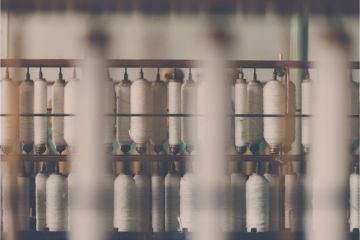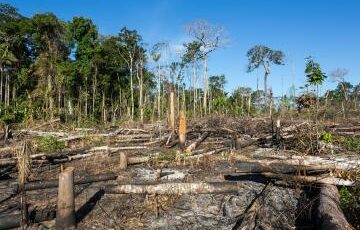
On July 1, 2023, the Extended Producer Responsibility for Textiles Decree came into effect, establishing comprehensive regulations that hold textile manufacturers accountable for the proper disposal of their products. Learn how this Extended Producer Responsibility for Textiles Decree impacts the industry
The textile industry, with its vast global presence, has come under increased scrutiny due to environmental concerns. Countries around the world, including the Netherlands, are implementing new regulations to ensure that textile producers take greater responsibility for the products they place on the market. The Extended Producer Responsibility for Textiles Decree (ERP) which came into effect on 1 July 2023, is a testament to this shift.
| EPR applies | EPR does not apply |
| Consumer clothing (61 and 62) | Shoes (64), bags, belts (42) (non‑textile products) |
| Workwear (61 and 62) | Headgear (65) |
| Bedclothes (6302) | Blankets (6301), bedspreads (6304) |
| Table linen (6302) | Net curtains, curtains and blinds |
| Household linen (6302), such as towels and tea towels | Bags (6305), tarpaulins, canvas, tents (6306), floor cloths, dishcloths, cleaning cloths, dusters (6307) |
| Returned products (that were placed on the market) | Unsold products (that were not placed on the market) |
Introduction: What is the Extended Producer Responsibility for Textiles Decree?
Initiated in the Netherlands, the Extended Producer Responsibility for Textiles Decree mandates specific guidelines for textile producers. This legislation primarily makes producers accountable for the waste management of textile products post-consumer usage. Starting 2025, this responsibility will encompass both the reuse and recycling of discarded textiles.
Key Responsibilities of Producers Under the EPR Textiles Decree
1. Reuse and Recycling Objectives
Textile producers, as per the decree, must aim to:
- Prepare for Reuse: By 2025, 50% of the textiles introduced to the market should be prepared for reuse. This includes activities like checking, cleaning, and mending, ensuring the textile can be repurposed without further processing.
- Recycling: It denotes converting discarded textiles into new products, materials, or fabrics. These recycled items can then be transformed into other goods. Notably, the recycling process allows for ‘downcycling’, where the recycled material is employed in a lower-quality capacity than its original state.
2. Specific Recycling Categories
The decree highlights:
- Fibre-to-Fibre Recycling: By 2025, at least 25% of the textiles introduced should undergo this recycling method, ensuring the material retains its textile nature.
- Combined Recycling and Reuse: The textiles should adhere to the mandatory percentages in both recycling and reuse annually.
3. Tracking and Reporting
Each producer should:
- Regularly report their compliance with the EPR regulations.
- Submit annual reports to Rijkswaterstaat, the Dutch Directorate-General for Public Works and Water Management.
It’s crucial to note that the Economic Offences Act can enforce these obligations, making compliance paramount.
Which Textile Producers are Affected?
The term “producer” encompasses not only the actual manufacturers but also those who introduce these textile products to the Dutch market for the first time. This means importers can also be considered producers. As a result:
- Producers are mandated to collect textile waste and prepare it for reuse and recycling.
- They can choose to either meet these obligations individually or join a producer organization that can fulfil these duties on their behalf.
Practical Implementation and Municipal Role
Municipalities have traditionally been responsible for household waste collection. By 2025, the separate collection of textile waste will be a necessity. While most municipalities have already adopted this practice, there’s a transition from the existing system where textiles were majorly incinerated. The evolving relationship between municipalities and producers in EPR systems is still under evaluation, especially regarding collection responsibilities.
Producer organizations, like the EPR Textile Foundation established in 2022, might play a pivotal role in assisting producers in meeting their obligations. This centralization can streamline the collection and processing phases.
European Versus Dutch EPR Decree
An intriguing aspect of the Dutch EPR Textiles Decree is its autonomy from European EPR decrees. The recent European proposal for an EPR decree on textiles, which aims to modify the Waste Framework Directive (WFD), differs from the Dutch version in significant ways.
- Scope: The European EPR seems to have a broader scope, covering a different range of textiles compared to the Dutch decree.
- Producer Autonomy: The European proposal requires individual producers to assign their responsibilities to a producer organization, unlike the Dutch version that leaves this choice with the producer.
Despite these disparities, it remains to be seen how the eventual amendment to the WFD will align with the Dutch EPR Textiles Decree.
Dutch product compliance lawyers
As we navigate the changing landscapes of the textile industry and environmental responsibility, producers must remain vigilant and informed. The Extended Producer Responsibility for Textiles Decree signifies a step forward in sustainable practices. At our law firm for product compliance, we are committed to assisting producers in understanding and adhering to these new guidelines, ensuring both business success and environmental stewardship.






